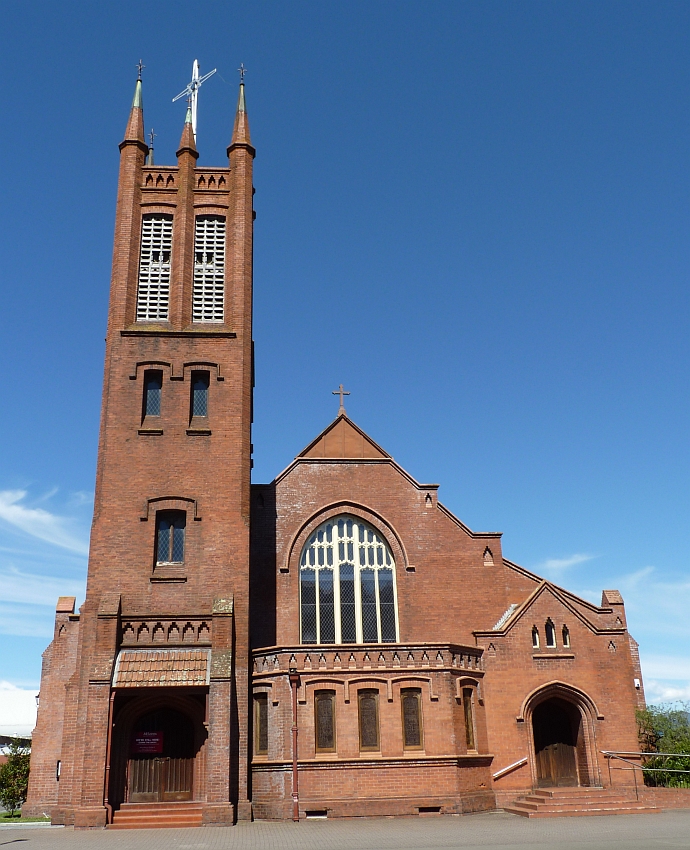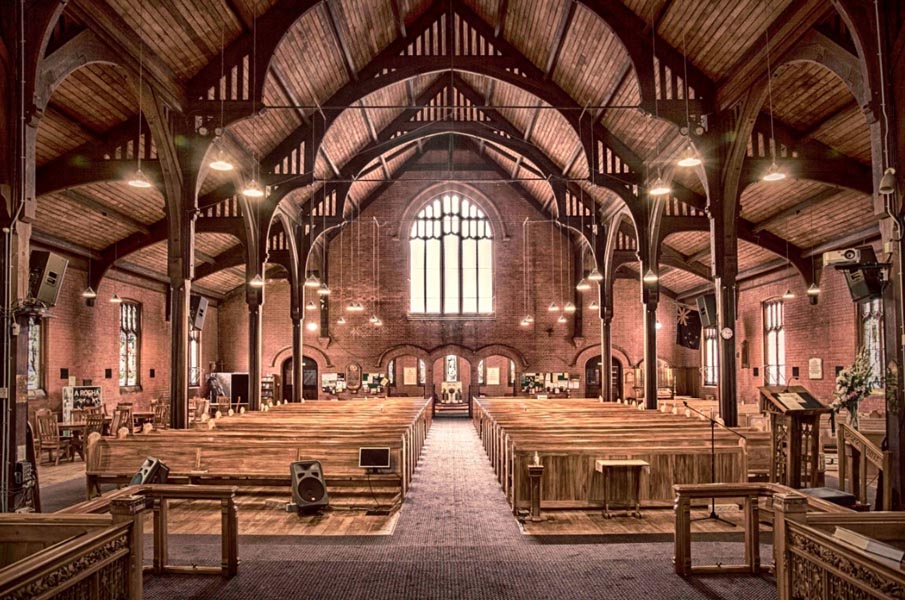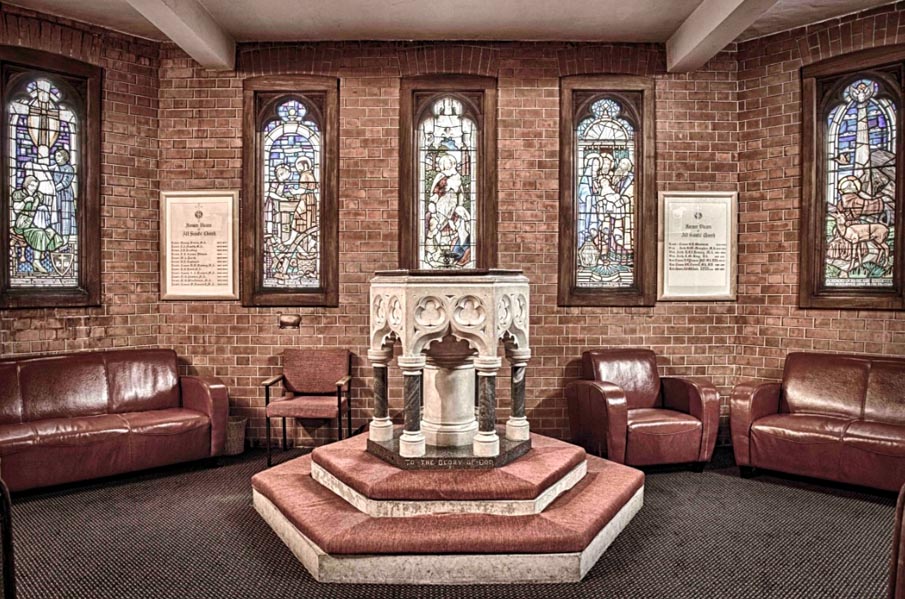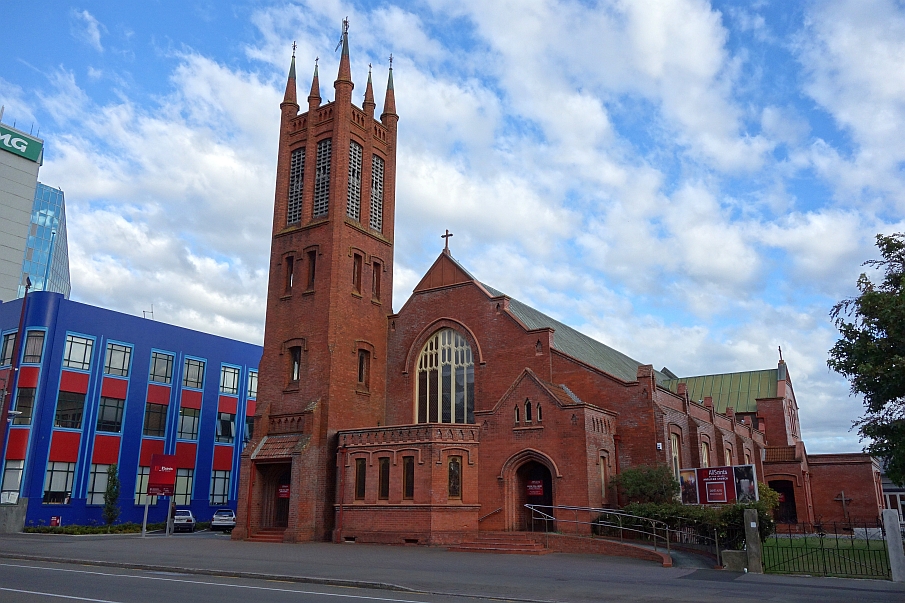Designed in brick by eminent New Zealand architect Frederick de Jersey Clere (1856-1952), All Saints' Church in Palmerston North has served as a centre for the Anglican community since 1914. The Church was the third Anglican church to be built on section 838, Palmerston North. In 1875, three years after the first Anglican service in Palmerston North was held in a sawmill, Bishop Octavius Hadfield (1814-1904) purchased the bush-covered section for use by the Anglican Church. That same year, the foundation stone for the first church, a simple wooden structure, had been laid. The arrival of full-time vicar Reverend John Lloyd Keating boosted attendance and by 1882 the original church had been incorporated into a more substantial timber structure. Twice enlarged to accommodate the growing Anglican population, by 1904 the building required substantial maintenance and the parish agreed that a new building was necessary. In 1905, determined that the parish should have 'a brick church really worthy of being the House of God', Archdeacon C. Coleridge Harper commissioned the architect of the Anglican diocese Frederick de Jersey Clere to complete plans for a new church. Clere's initial design for the brick church was rejected. It provided less seating than required and incorporated elements better suited to a timber church. Yet the desire for a new church remained and in 1910 the site was prepared for the new building by moving the timber church to the rear of the property. In 1913, amid growing concern that the nearby Grand Hotel (1906) overshadowed the church, Clere was commissioned to complete a new design for the building. Clere's revised design for All Saint's church reflects his skilful adaptation of European architectural styles to suit New Zealand conditions. The Church was designed in the English Gothic style and emphasised its solid brickwork construction. Reputedly made from 365,000 red bricks arranged in the strong, English bond pattern, the Church exterior featured four arched openings that incorporate elements of the Perpendicular Gothic style. The Church was based on a rectangular plan and dominated on its west elevation by a rectangular tower that soared above the Grand Hotel building opposite. The symmetrically designed interior allowed seating for up to 950 people and incorporated a small chapel and baptistry. Regularly placed arches of Jarrah supported the roof frame. The parish accepted Clere's design and builder John Henry Meyer began construction on the new All Saints' building in February 1913. Funds were raised by encouraging parishioners to 'purchase a brick for shilling', and by 1914 the Church was completed at the cost of £7,800. It was consecrated two years later in 1916. Since its opening, All Saints' Church has played an important role in the Palmerston North community. It has served as the centre of Anglican faith for the community and its parish has responded to social needs with the institution of various clubs and societies. This role is physically represented in the Church by features such as the Great East Window, a memorial to those who died in the First World War, and the Scout and Guide Corner, which includes a memorial lamp to those whose died in the Tangiwai disaster in 1953. The building remains in close to its original state and is in excellent condition. All Saints' Anglican Church has strong, spiritual significance as a long-standing place of worship and is a continuing symbol of the strength of the Anglican faith in the Diocese. It is historically noteworthy for its association with the establishment of the Anglican church in the area and is enhanced by its relationship with the original church buildings located at the rear of the section. The building has architectural importance as an example of the work of the eminent New Zealand architect, Frederick de Jersey Clere. The building provides insight into Clere's skills as an architect and exhibits his ability to design in brick. The structure has considerable aesthetic appeal and its spire is a landmark in the flat, urban area of Palmerston North.




Location
List Entry Information
Overview
Detailed List Entry
Status
Listed
List Entry Status
Historic Place Category 1
Access
Private/No Public Access
List Number
191
Date Entered
11th November 1989
Date of Effect
11th November 1989
City/District Council
Palmerston North City
Region
Horizons (Manawatū-Whanganui) Region
Legal description
Pt Sec 838 Township of Palmerston North (RT WN 497/137) Wellington Land District
Stay up to date with Heritage this month
